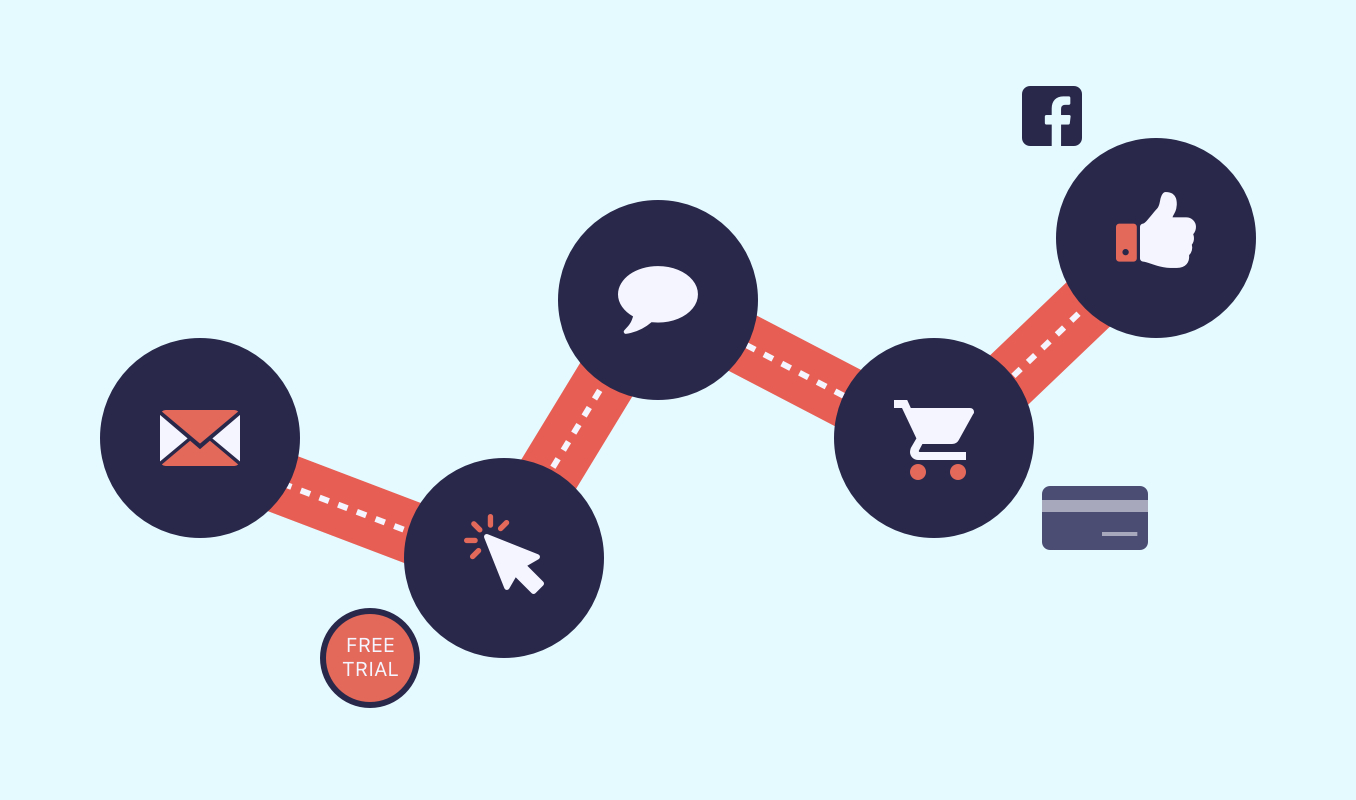
While design, loading speed, positioning, categorization, pricing, and SEO are all important for the efficiency and success of an e-commerce platform, 'humanizing' your branding with creative, personalized content helps you become more than just a storefront.
e-commerce personalization takes demographic data, customer intent, and other customized variables into account to maximize conversions and increase Average Order Value (AOV). Using customer preferences to tailor your online experience incentivizes the product discovery process for the buyers and prompts them to keep engaging with your business.
A 2013 research commissioned by Infosys compiled responses from 50 retailers and 1,000 consumers across the United States. 86% of the participants admitted that personalization somewhat influences their purchase decisions, while 25% reported that personalization radically influences when, what, how and where they purchase. On the other hand, 62% of retailers who offer personalization, 74% noticed an increase in sales, 61% saw a boost in profit, 58% observed a jump in online traffic and 55% reported a rise in customer loyalty.
Today, personalization goes beyond simply welcoming back a repeat customer or showing them product recommendations based on their prior purchases. Creating a persuasive experience that encourages the customer to take a definitive action and/or come back again is what organizations, specifically marketers, should focus on.
There are relatively easy, yet sophisticated ways to implement personalization in your customer lifecycle journey. Here's how you can get started:
1. Create adaptive content for your homepage:
With current technological advancements, systematically gathering customer data by monitoring shopping behaviours is not that hard. However, what most marketers struggle with is converting the sheer volume of data at hand into actionable insights. With adaptive content, you can not only semantically structure your data, but also change the way a customer interacts with your store on their first visit.

According to Charles Cooper, as stated in The Language of Content Strategy, "[Adaptive] content is designed to adapt to the needs of the customer, not just cosmetically, but also in substance and in capability. Adaptive content automatically responds to the screen size and orientation of any device, but goes further by displaying relevant content that takes full advantage of the specific capabilities of the device being used.” In layman terms, adaptive content can ‘modify’ itself based on a number of factors, for example:
- Devices - operating system, screen resolution, desktop, mobile or tablet.
- Context - time, temperature, location or humidity.
- Person - age, language, gender, country, or stage of life.
For example, instead of simply showing a navigation bar with recommendations, tailor your content to different customers based on their geographical location, purchasing history, or other personalization information. Consider the following e-commerce store that alters their homepage based on the weather in the customer’s location. For a particularly sunny day, product recommendations include popular summer outfits, whereas, for a rainy day the product recommendations change to umbrellas.


2. Use Artificial Intelligence (AI) to enhance the user experience:
New technological advancements, where machines learn while they work, Artificial Intelligence (AI) is changing the way businesses interact with customers and generate potential leads. In fact, 45% of C-level executives believe that AI is freeing up employees' time for more important and higher value work, whereas 90% agree that AI deployments have turned up measurable business benefits at their company.
There are multiple ways in which you can incorporate AI in your e-commerce store:
Enable ‘Visual Search’ to increase click-through rates:
Our brains “process images 60,000 times faster than text and [that’s due to the fact that] 90% of information transmitted to the brain is visual.” For customers shopping online, visual content is transforming the way merchandise, commodities, and products are searched online. Using visual search, customers can instantly discover the products they want, in addition to similar products of interest. Every product choice they make helps the AI to predict their interests and suggest increasingly relevant recommendations with minimal effort.
For example, when a customer selects a picture of a chair, the AI analyzes the visual input to extract information, such as: the object have four legs, includes leather, has a backrest etc. Eventually, the object is identified as a chair and the customer can browse through a catalogue of chairs similar to the input. This can especially come in handy if the desired item is out of stock. Instead of leaving your store, customers can rely on AI to analyse the content and features of the product they want to make closely related suggestions.

Introduce chatbots for a personal touch:
According to a Gartner survey, almost 85% of customer interactions will be taken care of without human involvement by 2020. Chatbots are also anticipated to top the list of AI-based consumer applications in the next 5 years. Natural Language Processing (NLP) and AI technologies are being widely used in enterprise e-commerce, where customers can ask questions about their order, reset their password, find a specific discount item, or learn about other events of interest.
Using chatbot development platforms like Inbenta, you can build a custom bot that can adapt to your brand's personality and voice by referring to your knowledge base and existing communication systems. Providing your buyers with a personalized chat experience creates an opportunity to convert repeat customers into influential evangelists and advocates. There are chatbots that operate as a personalised online shopping assistant that guides customers from browsing to discovery to purchase, such as Visii Assistant.
Another example is, Nordstrom, the American luxury retail outlet is currently using a chatbot they created using Facebook Messenger.

Incorporate ‘Shop The Look’ functionality:
Sometimes, customers are unsure about the exact product they are looking for, and need product recommendations based on their previous purchase or something they saw on Pinterest. With ‘Shop The Look’, you can automatically curate visually relevant suggestions that match the customer’s style and grow your existing recommendations to enhance product discovery.

You can also create ‘Collections’ - where you can leverage your own product images to make automated relevant and up-to-date recommendations in a particular category, like ‘denim or ‘vintage’.


Perfect for stand-alone landing pages or social media campaigns, 'Collections' ensure that all your lesser-known products stand a chance at being bestsellers, while offering personalisation for your customers in real-time.
3. Improve your post-purchase emails to boost repeat customers:
Communication plays a crucial role in ensuring customer loyalty, so before you celebrate another new customer, consider the next steps in your e-commerce sales process. Thoughtfully-crafted post-purchase emails provide customers with a long-term value proposition for purchasing from your e-commerce store and also lays the foundation for more interaction in the future.
After analyzing 12.1 million post-purchase emails, Conversio noted an open rate of 40.5%, a click rate of 6.4% and a conversion rate 0.7% - which means, a follow-up email is twice as likely to be clicked and opened than an average e-commerce marketing email.
Send better post-purchase emails using the following tips:
Relevancy matters:
Before you craft a post-purchase email, ask yourself the following question: Why should my customer care about this? If your email does not benefit or provide a direct value to the customer, you will most likely get ignored.
Remember to include a receipt stating the total purchase amount, status of delivery, and customer support information in your message. Amazon takes it a step further by recommending products similar to the purchased items in their post-purchase email.

Create customer personas to segment your email list:
To send effective personal emails, you need to establish who your customers are, how they buy, what motivates their shopping behaviour, and how they think. Segmenting your customer database based on personas, interests, and requirements allows you to address specific pain points. For example, Intermix, an e-commerce store that sells designer clothes and accessories for women, groups their customers in the following categories:
Group 1 - VIPs Shoppers who like to be trendy and have the disposable income to afford the latest in fashion.
Group 2 - Discount buyers: Shoppers who are often on a budget and make most of their purchases through coupons, sales offers, etc.
Group 3 - Brand patrons: Shoppers who are cost-conscious but remain loyal to certain brands.
Based on these customer personas, emails like the ones below were sent out to Group 1 and Group 2, respectively. As a result, Intermix saw a 15% increase in their annual sales.


Analyze email reports to optimize future campaigns:
Understanding which emails resonate the best with your customers helps you optimize future campaigns, identify customer behaviour changes, and improve your overall email marketing strategy. For example:
- If more customers made a purchase after clicking through your '15% discount' email, as opposed to the 'free shipping' email, then you can tailor your campaigns to fit what your customers are responsive to.
- If a customer purchase was prompted by your blog newsletter, then your post-purchase emails can incorporate recommendations to specific blog posts to encourage repeat orders.

In Conclusion:
Now that you’re aware of the best e-commerce personalization strategies, and are looking to get started, here’s some help:
- Establish your personalization goals: What are you looking to achieve by implementing personalization on your platform? What are your personalization success metrics and KPIs?
- Outline your capabilities: Once you've determined your goals, whether they are increasing repeat customers or reducing exit rates, you will have a better idea about the personalization approach that will work the best for your brand.
- Choose a personalization vendor: You will need to partner with or reach out to technology vendors who can help you avoid common pitfalls in the personalization process and make the transition easier.
Lastly, remember to always A/B test all personalization tactics that you deploy on your platform, in order to measure their long-term effectiveness. Eventually, you’ll be able to narrow down what works or doesn’t work for your customers and e-commerce brand.



.png)